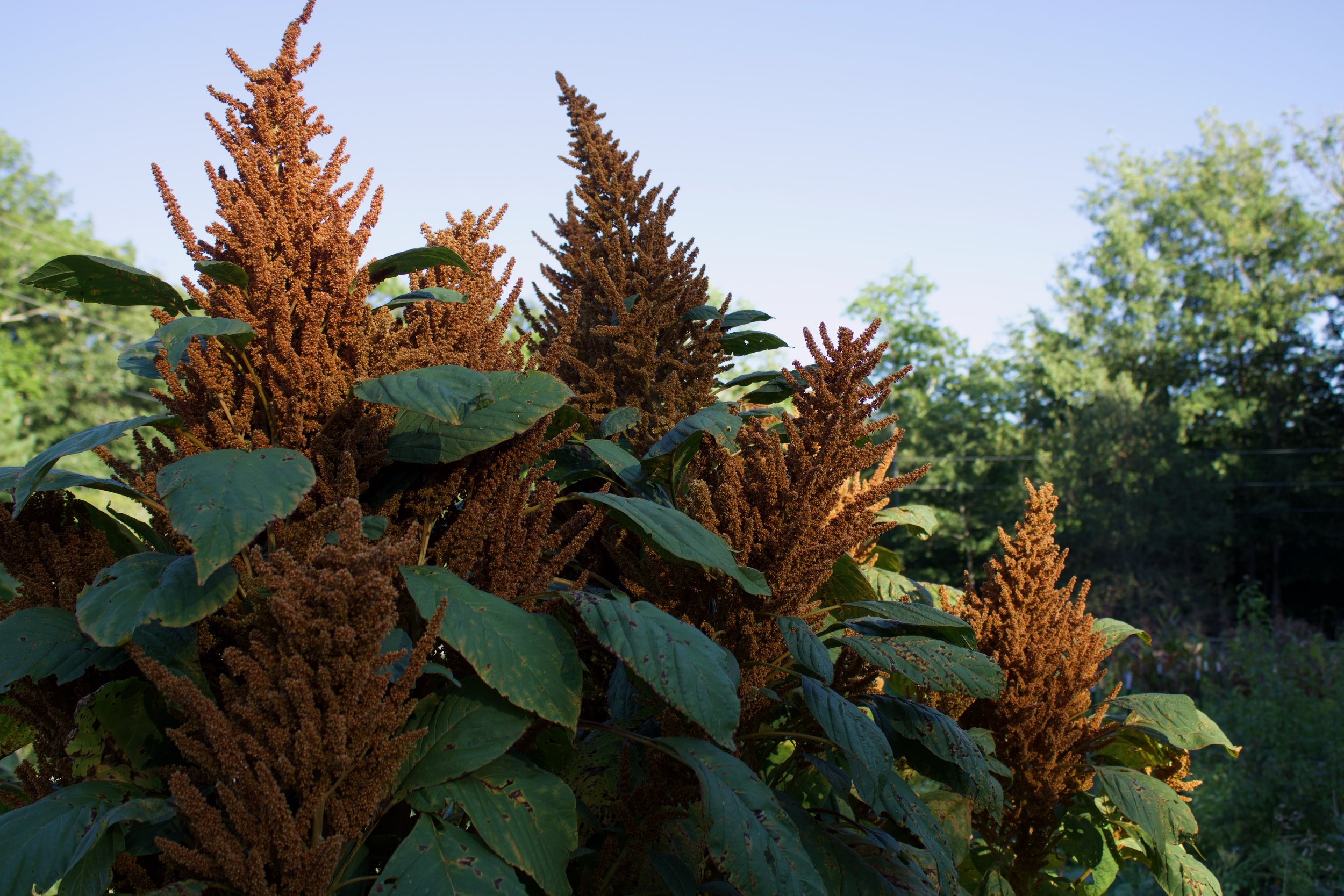"Abenaki Rose" Maize (Flour)
90 days to maturity
100 seeds per packet
90 days to maturity
100 seeds per packet
90 days to maturity
100 seeds per packet
Zea mays
We learned of this variety from corn keeper, Albie Barden of Norridgewock, Maine. Barden received 12 kernels from a Mi’kmaw man who had traveled to New York in order to salvage this precious variety and plant it out at his home. He explained to Barden that this beautiful corn, named Abenaki Rose, was originally grown in Maine. Over patient years Barden’s 12 seeds multiplied and he has since distributed thousands of seeds with the intention of ensuring the survival of this variety.
Abenaki Rose is an elegant plant, whose strong presense magnifies when grown in a large swath with her sisters. The stalks and husks turn blood red with maroon and green halos. In its milky stage, the ears have cream colored kernels with a singular droplet of deep burgundy on each seed. When the ears and seeds begin to dry down, the kernels mature into a blend of deep red, rosy pink, gold and cream. Abenaki Rose’s soft kernels grind easily into a fine flour. We are further selecting our seed stock to resist lodging in high winds, to reliably produce two ears per plant and for deeper rose coloring.
Growing Instructions:
Direct seed after last frost or start 3 weeks prior to last frost and transplant out after.
Space plants 6” apart in rows 24” apart. Alternatively, plant in hills 36” apart all ways with 6 seeds per hill. If growing pole beans up the stalks, row spacing should be 36”.
Maize is a heavy feeder so provide plenty of compost at time of planting. We also recommend a fall or spring cover crop of peas or another annual legume to fix nitrogen for the corn planting. Make sure soil pH is between 5.8 and 7.0. If plant needs a growing boost, water with nitrogen tea or compost tea a few times. If trace minerals are inadequate, sprinkle a small amount of woodash or azomite in each planting hole.
Harvest Instructions:
Cobs can be dried on the plant OR harvested slightly early and dried inside. We prefer harvesting slightly early to make room for a fall crop. Make sure to hang the ears to dry so mold doesn’t develop. You could also lay ears out on a wire mesh table in a barn or shed. Air flow around the ear is key. Store away from rodents! Once ears are dry you can break cobs in half and rub your fingers over them to loosen the kernels from the cob. There are also inexpensive handheld corn-shuckers that can assist.











